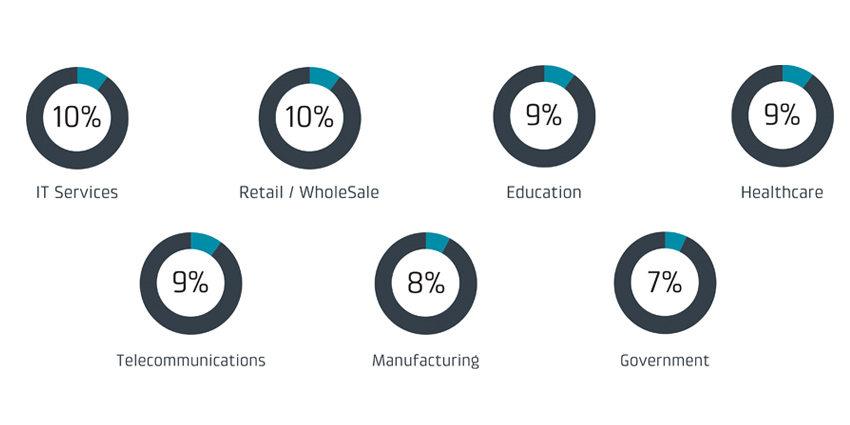Networking company Cradlepoint’s recent “State of IoT” report for 2017 and 2018 found that around 69% or more of organisations have now adopted, or plan to install IoT strategies in the next year. This is even though 40% of companies claim that they’re seriously concerned about the state of security.
The study was conducted by Spiceworks, and it looked at 400 IT professionals across the UK, Canada, and U.S. belonging to companies with at least 500 employees. The research was spread across 22 industries, and all the respondents had some connection with the IoT decisions and strategies connected with their brands.

IoT Curiosity Prevails Despite Safety Issues
According to the report by Spiceworks, cyber-security remains to be the most pressing concern for IT professionals, but this hasn’t stopped the desire for IoT in the workplace. The study found that around 71% of the people already using IoT in their business were using it to develop their security strategies, often with the help of high-tech security cameras.
It may be that the desire for greater security is what drives IoT the most, even though recent botnet attacks have been focused largely on IoT devices. The analytics suggest that around half of all organisations surveyed are currently deploying IoT in their enterprise network, while almost 60% plan to manage their own IoT security.
How Risky are IoT Devices?
In a world of digital transformation (DX), IoT is one of the most exciting technologies available on the market for modern and growing companies. However, the adoption of this new strategy shouldn’t come at the expense of security and privacy. After some big concerns with IoT problems like Mirai and Reaper, which led to infections across millions of Internet-connected devices, it’s important to remember that insecure IoT can put businesses in an incredibly dangerous position.
According to the senior technology analyst at Spiceworks, Peter Tsai, IoT comes with a range of challenges that need to be addressed before an adoption can be considered. Before a business can deploy a network-connected device, and potentially create holes for hackers to get through in their infrastructure, they’ll need to make sure that they understand the integrity and security of the elements they’re bringing into their network.
Ken Hosac, VP Business Development at Cradlepoint said:
“This is a worrying trend. Companies opting to implement IoT technologies in-house on their core, enterprise network are leaving themselves vulnerable to attack. In the process of preparing their network for the future, they are in fact exposing their enterprise network to the threat of internal pivot attacks launched from compromised IoT devices, as well as potentially enabling those IoT devices to launch external IoT botnet attacks like Reaper and Mirai, which infected millions of IoT devices.
IoT should not be implemented without a comprehensive plan to secure the network. One way to mitigate the risk associated with an IoT implementation is to use a combination of Software-defined Networking (SDN) and Software-defined Perimeter (SDP) technologies to micro-segment users, applications and devices and minimise the attack surface.”
The State of IoT Report
For those who are enraptured by the concept of IoT for the development of business technology, but also want to learn more about keeping their company secure, Spiceworks claims to have the answer. They say that their “State of IoT” report highlights a significant issue within the commercial deployment if IoT strategies. Companies that are deploying IoT on their enterprise networks are expanding their exposure to potential attacks, and potentially opening themselves up to new vulnerabilities that their IT teams simply can’t handle.
Fortunately, organisations can begin to leverage software-defined technology in the marketplace that will allow them to develop virtual overlay networks without the need for trained specialists. This should reduce the risk from IoT devices by separating them from the existing network, and shielding them from being accessible through the internet.







